The Intel Broadwell Desktop Review: Core i7-5775C and Core i5-5675C Tested (Part 1)
by Ian Cutress on June 2, 2015 7:45 AM ESTProfessional Performance: Linux
Built around several freely available benchmarks for Linux, Linux-Bench is a project spearheaded by Patrick at ServeTheHome to streamline about a dozen of these tests in a single neat package run via a set of three commands using an Ubuntu 11.04 LiveCD. These tests include fluid dynamics used by NASA, ray-tracing, OpenSSL, molecular modeling, and a scalable data structure server for web deployments. We run Linux-Bench and have chosen to report a select few of the tests that rely on CPU and DRAM speed.
Due to our limited testing time and other issues, only the i7-5775C was processed in our Linux tests. These should be updated for Part 2.
C-Ray: link
C-Ray is a simple ray-tracing program that focuses almost exclusively on processor performance rather than DRAM access. The test in Linux-Bench renders a heavy complex scene offering a large scalable scenario.
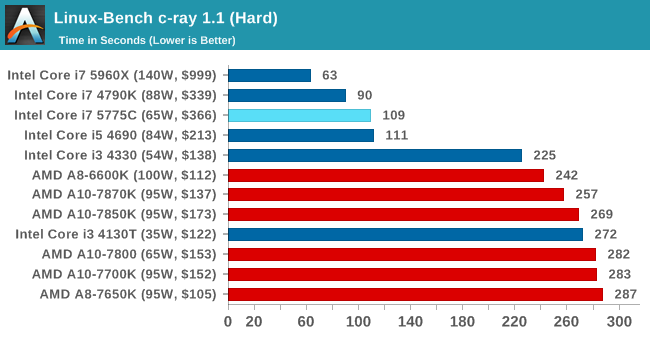
NAMD, Scalable Molecular Dynamics: link
Developed by the Theoretical and Computational Biophysics Group at the University of Illinois at Urbana-Champaign, NAMD is a set of parallel molecular dynamics codes for extreme parallelization up to and beyond 200,000 cores. The reference paper detailing NAMD has over 4000 citations, and our testing runs a small simulation where the calculation steps per unit time is the output vector.
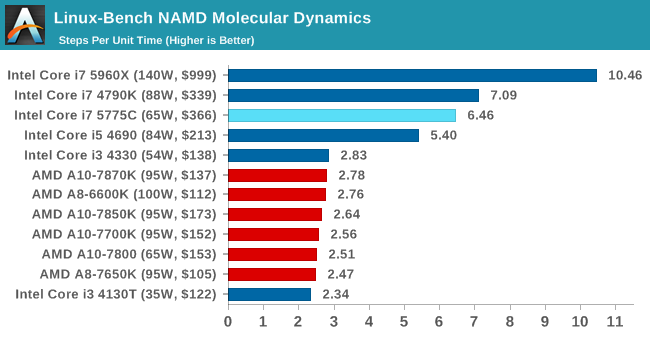
NPB, Fluid Dynamics: link
Aside from LINPACK, there are many other ways to benchmark supercomputers in terms of how effective they are for various types of mathematical processes. The NAS Parallel Benchmarks (NPB) are a set of small programs originally designed for NASA to test their supercomputers in terms of fluid dynamics simulations, useful for airflow reactions and design.
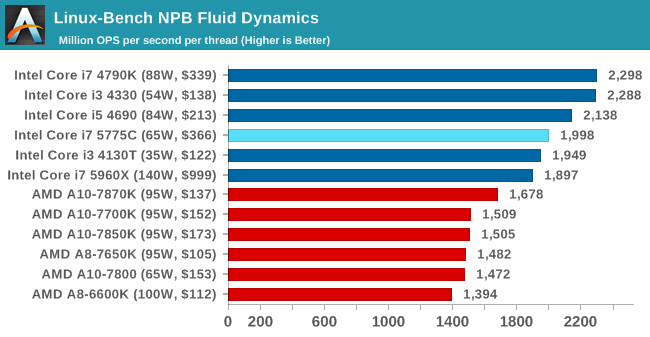
Redis: link
Many of the online applications rely on key-value caches and data structure servers to operate. Redis is an open-source, scalable web technology with a b developer base, but also relies heavily on memory bandwidth as well as CPU performance.
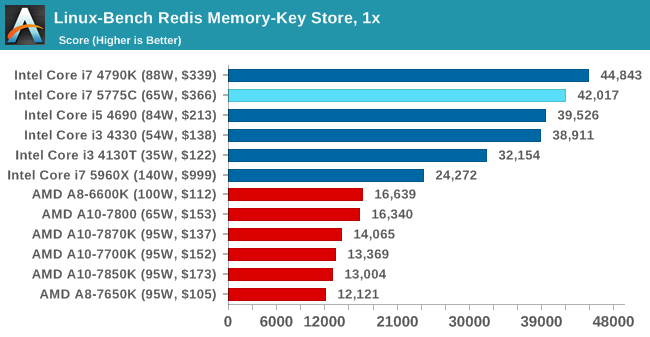
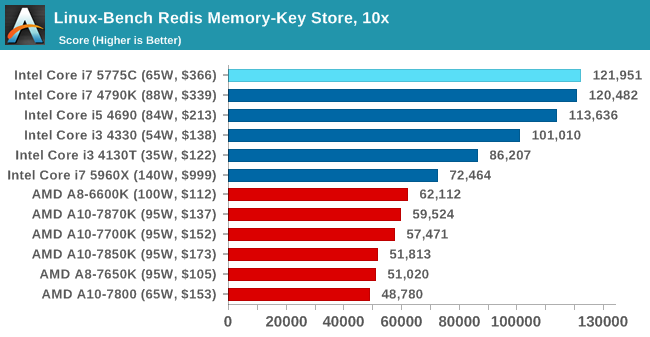
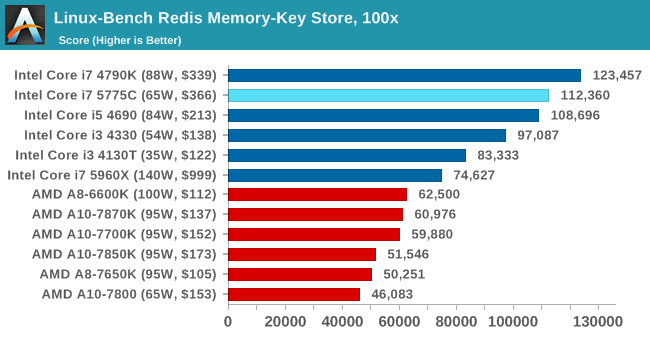










196 Comments
View All Comments
Oxford Guy - Wednesday, June 10, 2015 - link
"I know it's a dead socket, but could we AM3+ users request a CPU be thrown in the mix?"It might mess up the charts, which clearly make it look like you need to buy an Intel CPU rather than a $100 8320E with a motherboard discounted $40 (Microcenter).
Spectrophobic - Sunday, June 7, 2015 - link
I think an i7 with an Iris Pro 6200 is just a waste of die space, considering that you should be using a discrete card. An i5 should be fine, but an i3 w/ 6200 would be great at HTPC and light media scenarios.Doubt they're gonna release another Broadwell though. Hopefully i3 Skylake get the Iris Pro treatment.
PauloBrazil - Thursday, June 11, 2015 - link
is missing the tests with DirectX 12DirectX 11 is already exceeded
DirectX 11 uses more single core
Romulous - Thursday, June 11, 2015 - link
Some reviewerstwhile correctly call UHD .. well UHD. I thought a site like anandtech would get this correct. Stop calling it 4K!crashtech - Tuesday, June 16, 2015 - link
OK, time for part 2, please! :)varg14 - Wednesday, June 17, 2015 - link
When is part 2?Staafk - Wednesday, June 17, 2015 - link
Also waiting for part 2 now. Any eta on that? :-)Also I don't see why people don't want integrated graphics on high end cpus. I am under the impression that the integrated graphics is able to work with the discrete graphics card with dx12, adding some fps at least vs a cpu with no integrated graphics?
tuxRoller - Sunday, June 21, 2015 - link
You might want to give the phoronix test suite a look.It is very easy to use and provides many, many tests.AnnonymousCoward - Thursday, June 25, 2015 - link
I don't get it. Someone please explain why Intel doesn't make a non-iGPU version to cut their silicon cost in half for those who don't want it.edwardtoday - Monday, July 13, 2015 - link
In the 2nd page, the first word of the paragraph above the "Broadwell-K, or is it Broadwell-C, or Broadwell-H?" header, "Ultiamtely", should be "Ultimately".